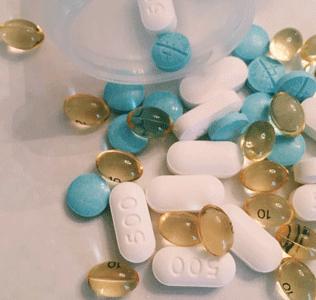Drug importation is no longer a pipe dream. Now it’s a pipe bomb. The Department of Health and Human Services recently floated a proposal, dubbed the “Safe Importation Action Plan,” to allow Americans to use Canada as their personal pharmacy.
The FDA has stated over and over again that our government cannot vouch for the safety and efficacy of Canadian medicines. Pushing this policy through would needlessly threaten patient health and well-being. And, it’s infeasible— Canada simply doesn’t have enough drugs to share with the United States.
The Safe Importation Action Plan offers two paths forward for drug importation. First, states, wholesalers, or pharmacists could submit plans for demonstration projects for HHS to review outlining how they would import Health-Canada approved drugs. Second, manufacturers could import versions of existing FDA-approved drugs into the United States.
The plan sounds reasonable enough, but neither the Trump administration or any state that’s been pondering drug importation has ever consulted the Canadian government. Had they done so, they’d see that our neighbors to the north have some serious concerns with the proposal.
Canadian officials have already stated that “Canada does not support actions that could adversely affect the supply of prescription drugs in Canada and potentially raise costs of prescription drugs for Canadians.” These concerns are justified.
Canada is just one-tenth the size of the United States with a mere 37 million people. Given the sheer magnitude of the U.S. population— a whopping 329 million people— there is no way Canada could cover drugs for all Americans.
The strain on the Canadian medicine supply would likely lead to shortages and increased costs for Canadian patients. If Canada filled 10 percent of U.S. prescriptions, Canada’s drug supply would run out in less than eight months, according to one study.
Even if Canada had an endless supply of treatments, drug importation is dangerous. Though the Trump administration’s new plan states that the drugs would be verified before importation, the Canadian government has stated that it cannot guarantee a drug’s effectiveness.
Counterfeit drugs are very common in foreign markets. In fact, one out of ten medications is fake, according to a 2017 report by the World Health Organization. Nevertheless, counterfeit medicine sales add up to billions of dollars a year.
There are two types of counterfeit medicines. The first are cheap copies of commonly sold drugs masquerading as the real thing. They contain few if any active ingredients and have no quality control. Patients who purchase these medications may not realize they’re taking ineffective drugs until their health condition fails to improve.
Other counterfeit drugs are composed of potentially deadly substances. Investigators have found counterfeit medicines that contain everything from paint thinner and antifreeze to arsenic and uranium. From April 2016 to March 2017 alone, Health Canada seized close to 5,500 packages of counterfeit drugs.
Access to high-quality medicines is a crucial issue, but drug importation is not the answer. The Trump administration’s drug importation plan would create more problems than it would solve by jeopardizing Canada’s drug supply and exposing Americans to deadly counterfeits.
Peter J. Pitts, a former FDA Associate Commissioner, is president of the Center for Medicine in the Public Interest.
